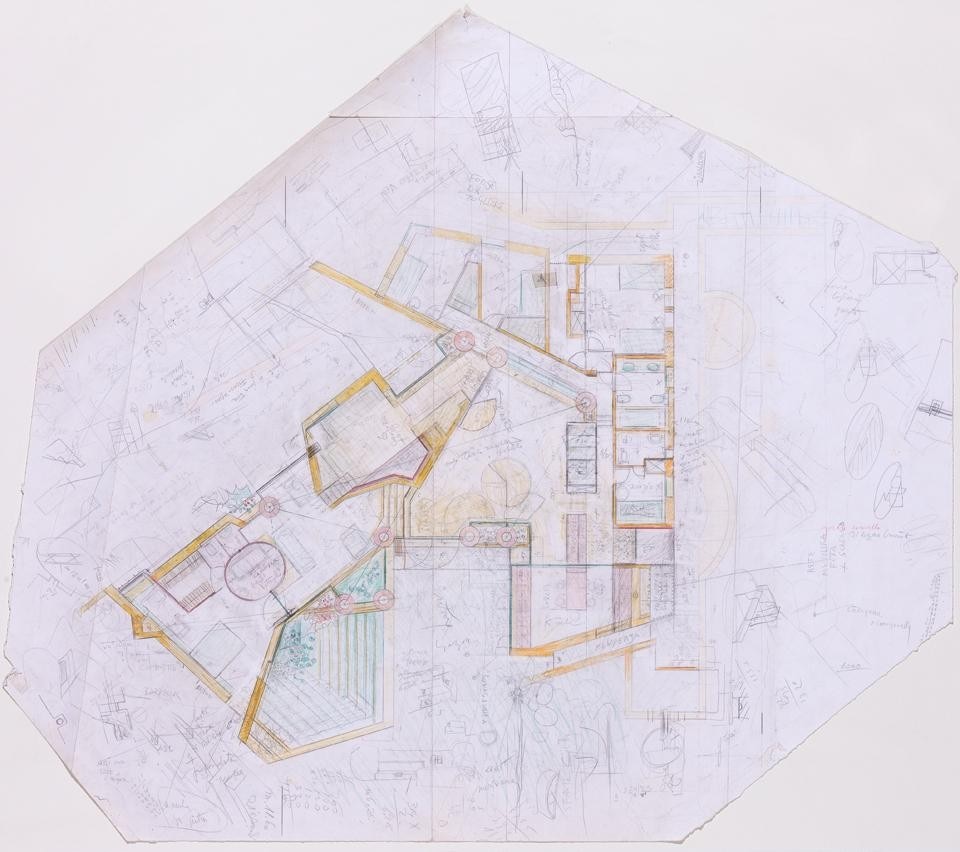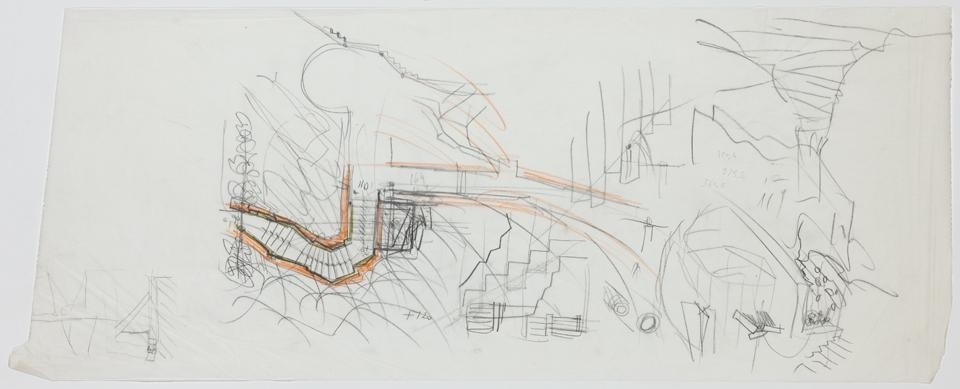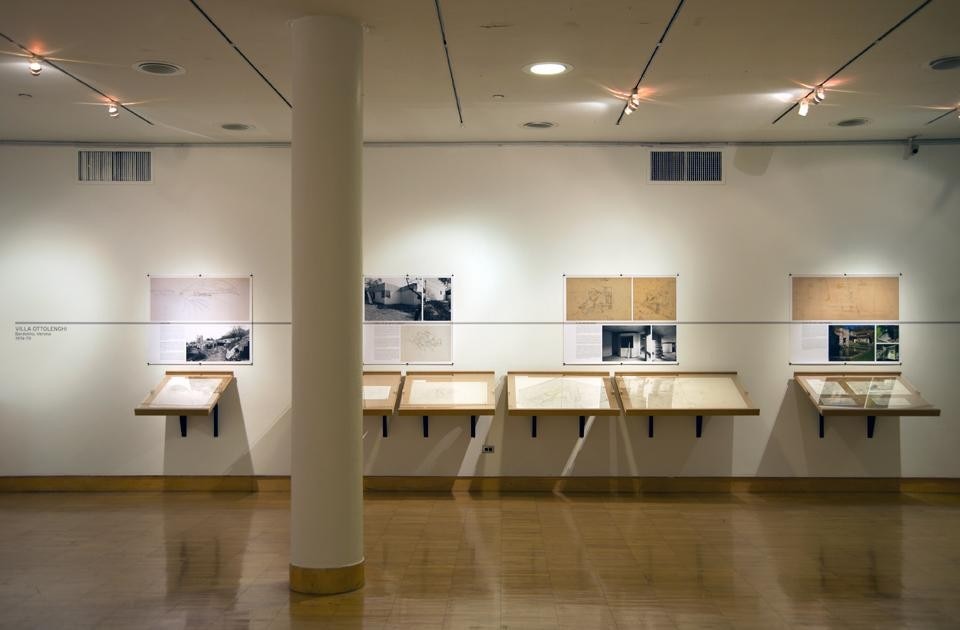Through his phenomenological approach to design and building, Scarpa allows the individual to experience the building through subtleties of design decisions he carefully makes, choreographing a performance of such through both the material composition and the layout of design and surrounding landscape.
Scarpa's process of thinking, design, and material application was recently brought into focus in an exhibition titled Carlo Scarpa: The Architect at Work at Cooper Union's Arthur A. Houghton Jr. Gallery in New York. Selected drawings from the architect's oeuvre, including designs and sketches for Villa Ottolenghi and Villa Il Palazzetto, were displayed alongside photographs of Villa Ottolenghi in 1978, prior to its completion, as well as photos of Scarpa's work at Villa Il Palazzetto. Despite being decades old, it is striking to see how Scarpa's built work possesses a contemporariness to it that many buildings constructed today seem to lack.
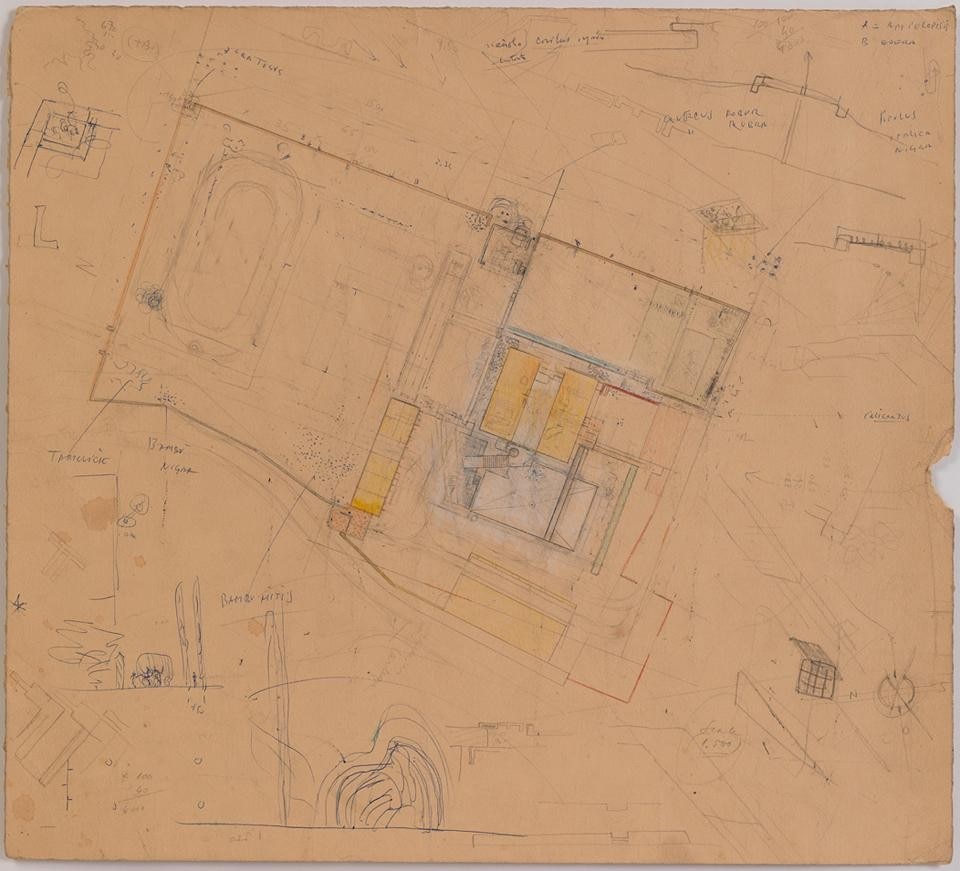
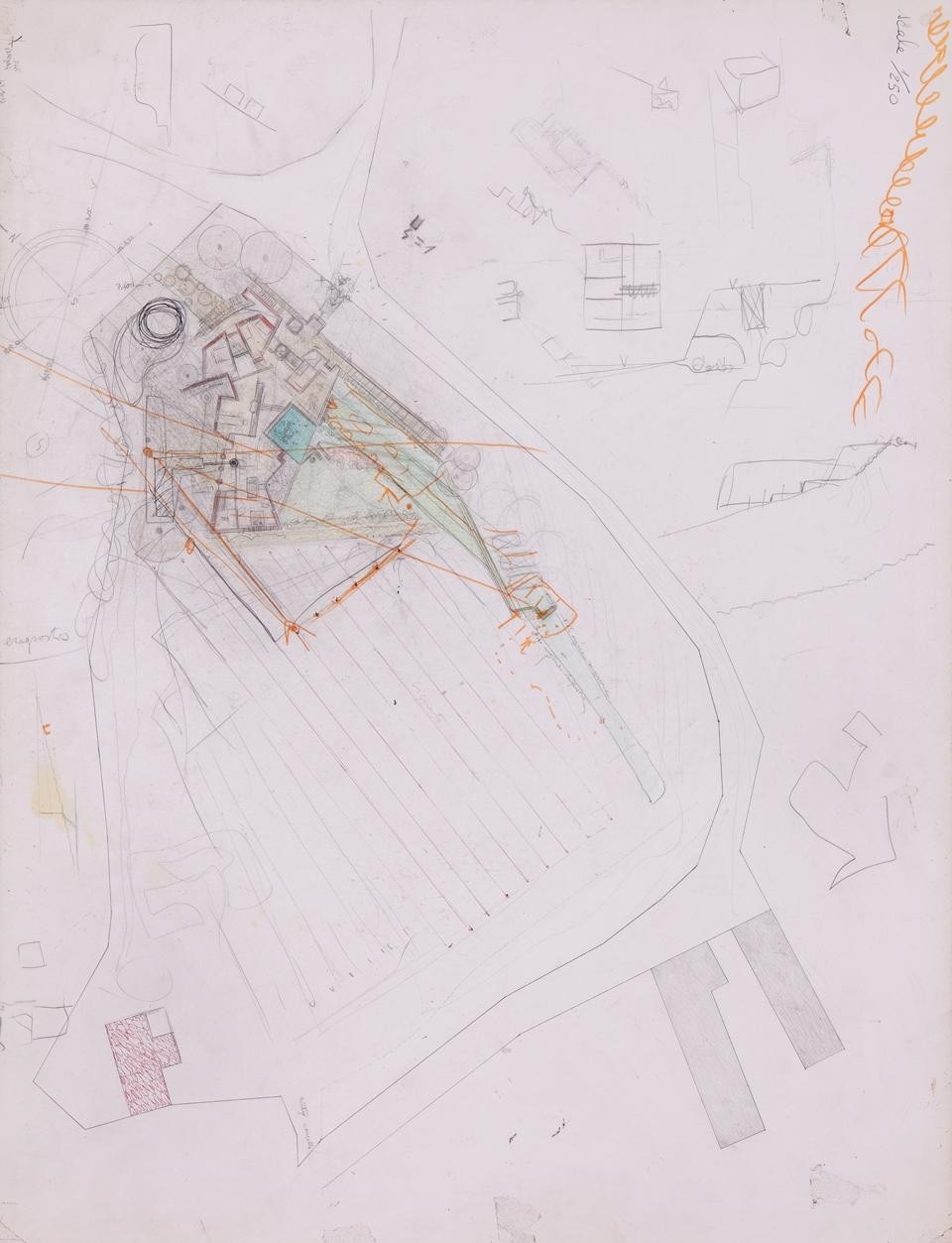
Designed at the end of his career and realized after his death, Villa Ottolenghi is a pivotal work in Scarpa's career and one of his most celebrated works
